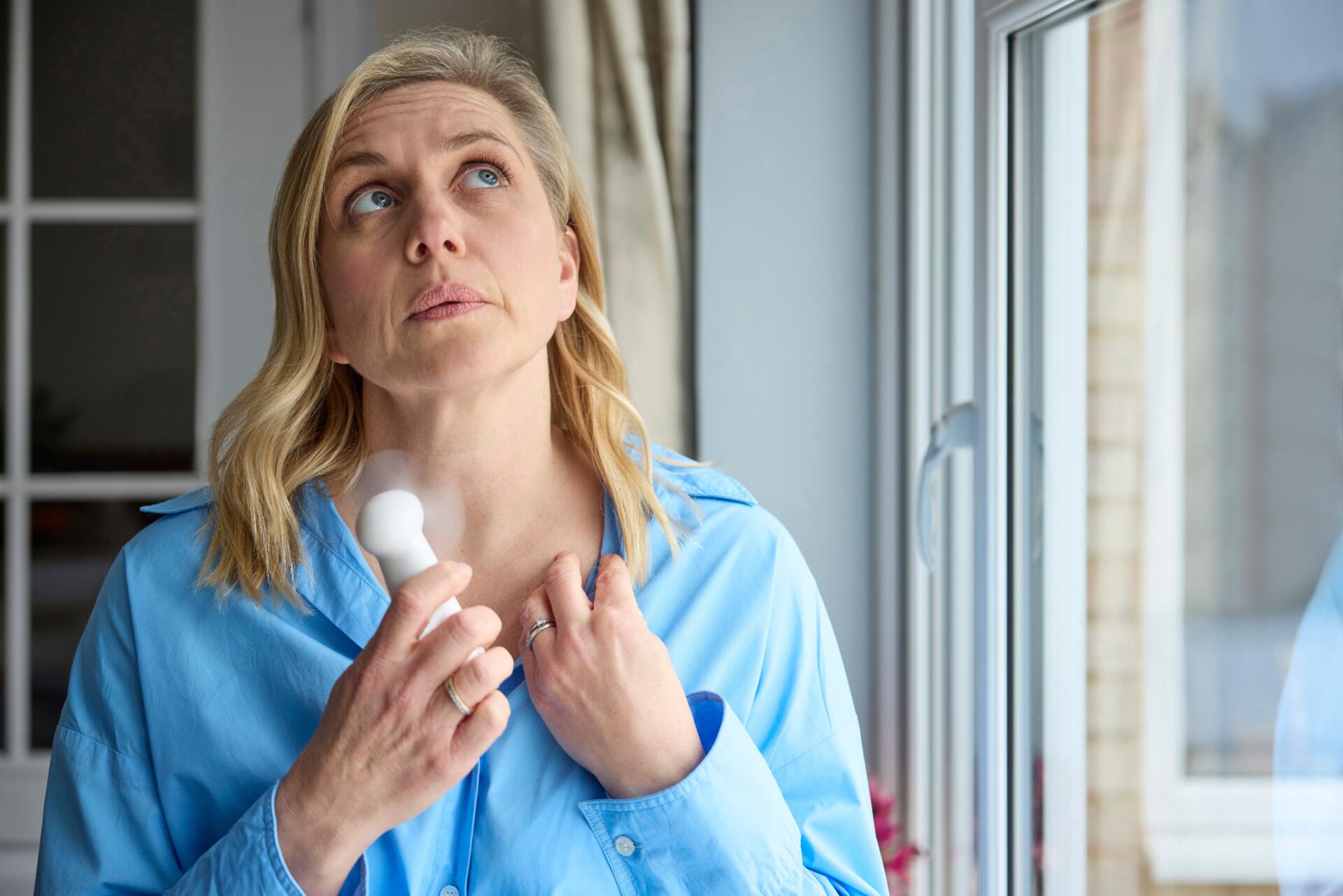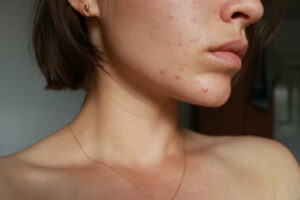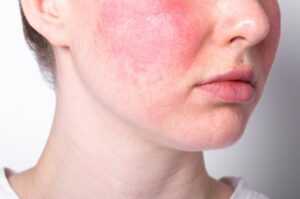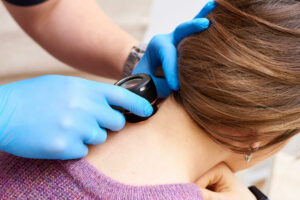Do you have moles? They are extremely common, so having them is not unusual.
Although most moles are harmless, some may become cancerous. For this reason, it’s crucial to keep an eye out for any changes.
If you notice a new mole or one that has started to change, you need to see your dermatologist to schedule a screening. Prompt detection is your best defense against skin cancer.
Keep reading to learn about 11 signs it’s time to get your moles checked out by your dermatologist and how to protect yourself against skin cancer!
What Are Moles?
Moles or nevi are skin-colored to brown growths or spots on the skin. Most people have between 10 to 45 moles on their body.
Moles can be present at birth, appear in early childhood and during the teenage years, or form throughout your life. They’re not contagious and have an average life cycle of 50 years.
Although most moles pose no threat to your health, some may become cancerous. Because of this, it’s crucial to know when you should have a mole seen by your dermatologist.
Dr. Renee Lucero, dermatologist and Mohs surgeon at Golden State Dermatology in Carmel, CA adds:
“While we often focus on visible moles, it’s important to note that some moles can develop in less obvious places like between your toes, under your nails, or even on your scalp. That’s why I always recommend a full-body skin exam to my patients, especially if they have a history of extensive sun exposure or a family history of skin cancer.”

When Should You Get Your Moles Checked by Your Dermatologist?
Here are 11 signs that it could be time to have your moles checked out by your dermatologist:
1. You Notice New Moles Appearing
You should see your dermatologist at Golden State Dermatology if you’re an adult and discover a new mole. Approximately 70 percent of melanomas start as a new mole.
It’s best to have your dermatologist check out any new mole to ensure it’s not cancerous. Melanoma is the most dangerous form of skin cancer, as it grows fast and can spread to any organ.
2. You Have an Ugly Duckling Mole
An ugly duckling mole isn’t necessarily unattractive and doesn’t have a particular color, shape, or size. It refers to a mole that looks different or stands out from the rest.
An ugly duckling mole could be darker, lighter, more significant in size, smaller, or different in shape than the others. Ugly duckling moles are not always cancerous.
However, if you find one, it’s worth seeing your dermatologist to ensure it is not cancerous.
3. You Have Asymmetrical Moles
Healthy moles are usually oval or round with two matching sides. If you divide these moles down the middle, both sides would mirror each other.
A mole with two different halves is considered asymmetrical.
Cancerous moles tend to be asymmetrical, so if you spot atypical ones, visit your dermatologist for a skin examination.
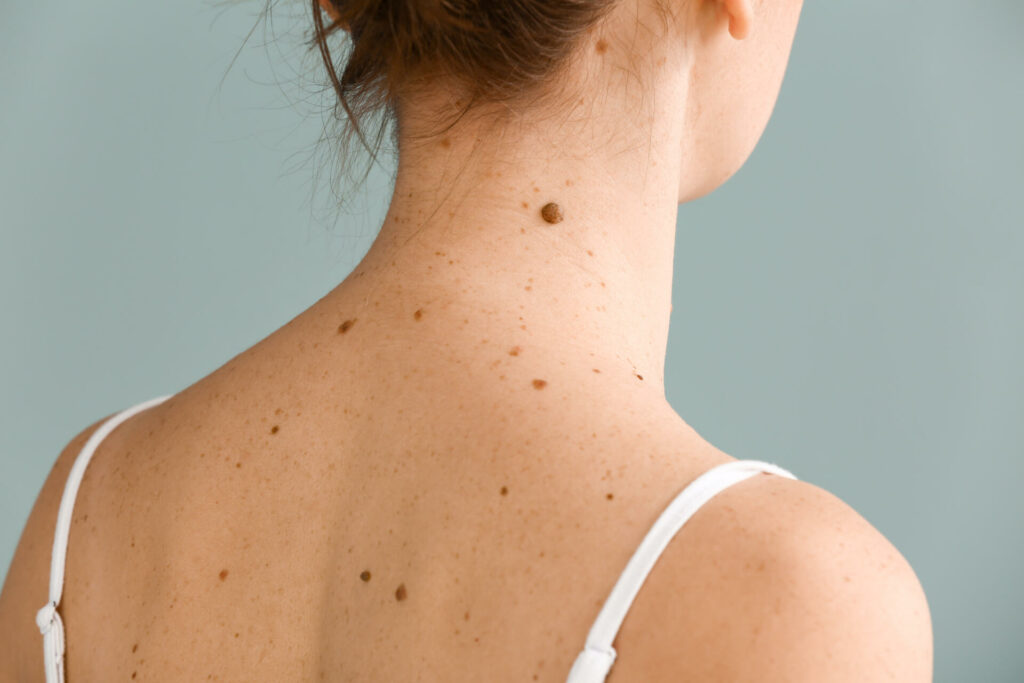
4. There Are Irregular Borders on Your Moles
Most benign moles have smooth, even, and distinct borders. You can quickly tell where these moles end, and the rest of the skin starts.
Cancerous moles are more likely to have poorly defined or bumpy borders. Uneven borders are not always a tell-tale sign of cancer, but they do increase the risk.
If a mole has jagged edges, it’s time to visit your dermatologist to get it assessed.
5. You Notice Color Changes on Your Mole
Has your mole changed color? Often, moles retain the same color.
If your mole was one color and has changed, it’s time to schedule a skin cancer screening with your dermatologist.
6. You Have Over 50 Moles
Pay attention to the number of moles on your body. Most people have 10 to 40 moles.
But if you have 50 or more moles, this increases the risk of skin cancer. If you find 50 moles or more on your body, have your dermatologist evaluate them to rule out skin cancer.
7. You Have a Mole with a Large Diameter
Is the size of your mole larger than a quarter inch in diameter or a pencil eraser? Most non-cancerous moles are less than a quarter inch, but exceptions exist.
If you’ve found a mole bigger than a pencil eraser or noticed an increase in mole size, it’s crucial to contact your dermatologist for further assessment.
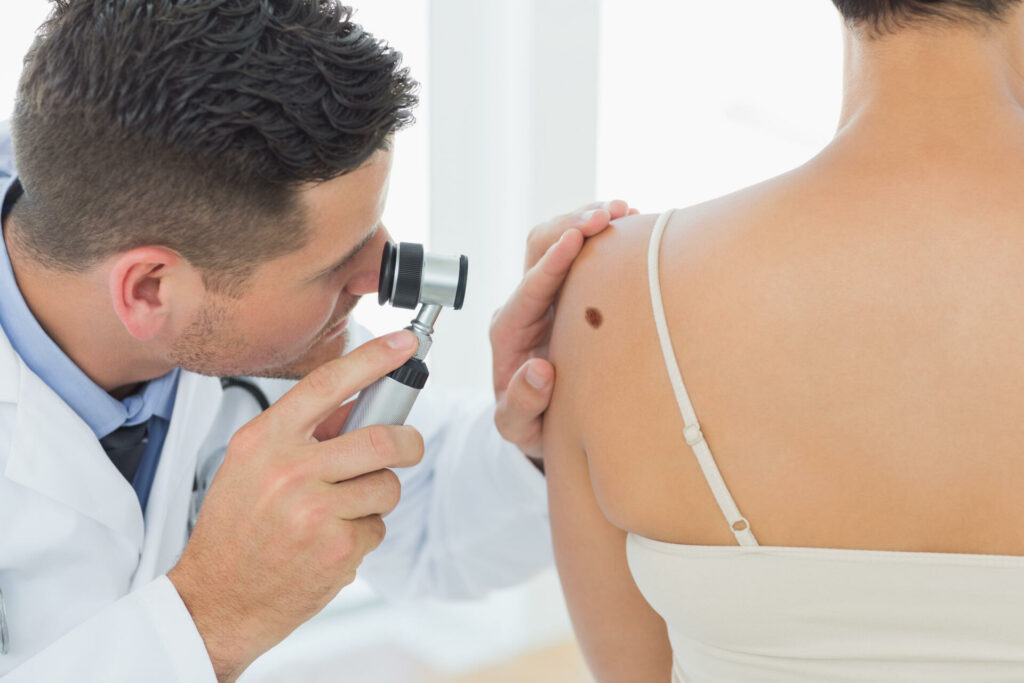
8. You Notice Your Moles Evolving
Healthy moles usually stay the same shape and size throughout your lifetime. If an existing mole changes in size or shape, that could be a red flag.
For children, however, some changes in a mole may be normal as moles tend to grow proportionally with the child.
Even though some moles change, they do so gradually over several years. Be on the lookout for changes that occur after only a few months.
It’s vital to have any mole checked by your dermatologist if it’s evolving.
9. You Have Moles That Are Multiple Colors
Most non-cancerous moles are one shade. Typically, common moles have even colors of tan, brown, pink, or black.
People with dark hair or skin usually have darker moles than those with blonde hair or fair skin. Although one mole may differ in shade from another, a single mole should have a consistent color throughout.
If you find a mole with various shades instead of one color, get it evaluated immediately by your dermatologist at Golden State Dermatology.
10. Your Moles Cause You Pain, Itch, or Bleed
If a mole itches, hurts, oozes, crusts over, or bleeds, it may be a tell-tale sign of a more serious issue. It could be due to irritation from clothes or jewelry rubbing on the mole, skincare products, or detergent.
But these might also be signs of skin cancer, making it essential to have your dermatologist look at it.
11. Your Moles Are Slow to Heal
A healthy mole can get bumped or scraped and should heal quickly. But if it doesn’t heal within three weeks, keeps scabbing, heals, and reopens, or the weeping or bleeding occurs occasionally, it may be a sign of skin cancer.
If a mole exhibits any of these symptoms, have it examined by your dermatologist.
Dr. Lucero emphasizes, “Many patients are unaware that changes in sensation around a mole can also be a warning sign. If you experience persistent itching, tingling, or even numbness in the area of a mole, it’s worth getting checked out. These sensory changes can sometimes precede visible alterations in the mole’s appearance and might indicate early cellular changes.”
When in Doubt, Get Your Moles Checked by Your Dermatologist
If you have a suspicious-looking mole, the dermatologists at Golden State Dermatology recommend timely screening. Early detection of skin cancer gives you the best chance for successful treatment.
Are you concerned about a mole? Book your appointment at Golden State Dermatology to get it checked. It could save your life.


